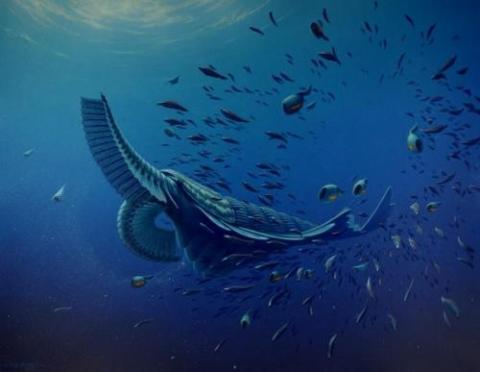
'Gentle Giant' Of Ancient Seas
Fossils found in Greenland in 2009 show that a strange, shrimp-like species which lived 520 million years in the Cambrian seas went from being an apex predator to a "gentle giant," filter feeing on small creatures like plankton. Writing in the journal Nature, researchers from England's University of Bristol say that the creature, Tamisiocaris borealis, was an early arthropod, the group that includes crustaceans and insects. And they say that T. borealis was huge.
How huge? Oh, about 28 inches long. That may not sound very big, but 520 million years ago, there were only very small animals in existence. At just over two feet, T. borealis was among the biggest animals around. "It was a gentle giant," said study author Jakob Vinther of the University of Bristol. "Even though this thing was not a whale or a whale shark, it evolved to become the equivalent."
The shrimp-like weirdo emerged during the Cambrian explosion, a period 485 to 540 million years ago when most of Earth's complex life first formed. "It was a very active period of evolution," said study co-author Nicholas Longrich of the University of Bath, in England. "We were seeing the appearance of complex animals for the first time--things with eyes, brains, jaws, legs and fins...Animals were trying out new modes of life--burrowing, swimming and crawling."
